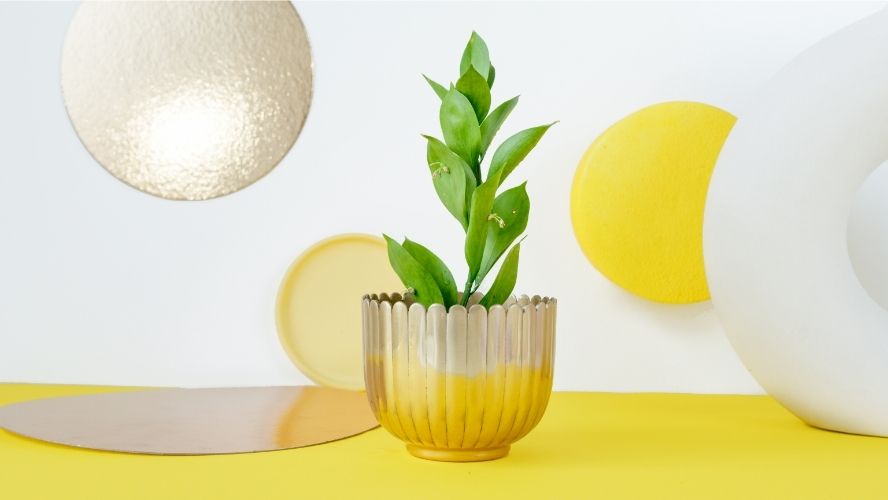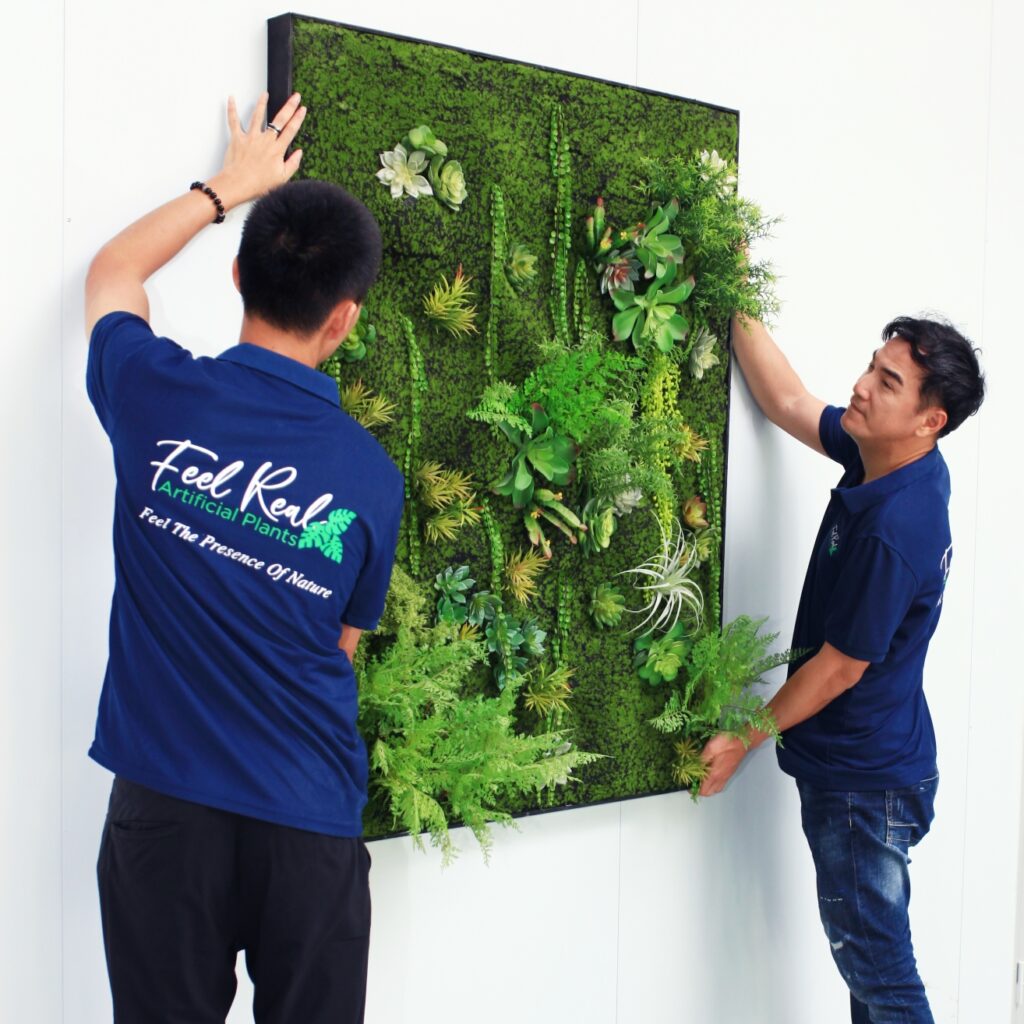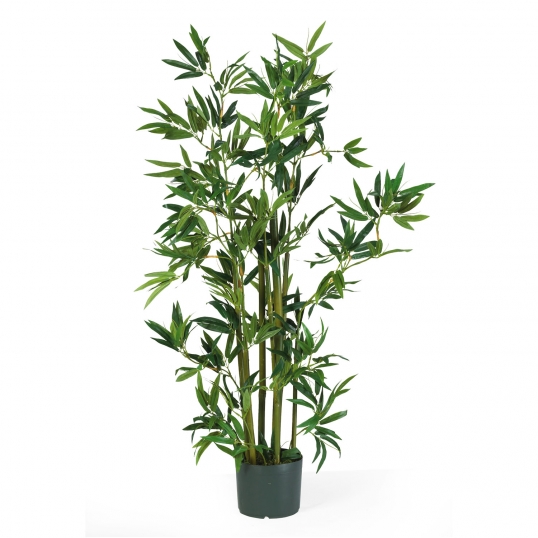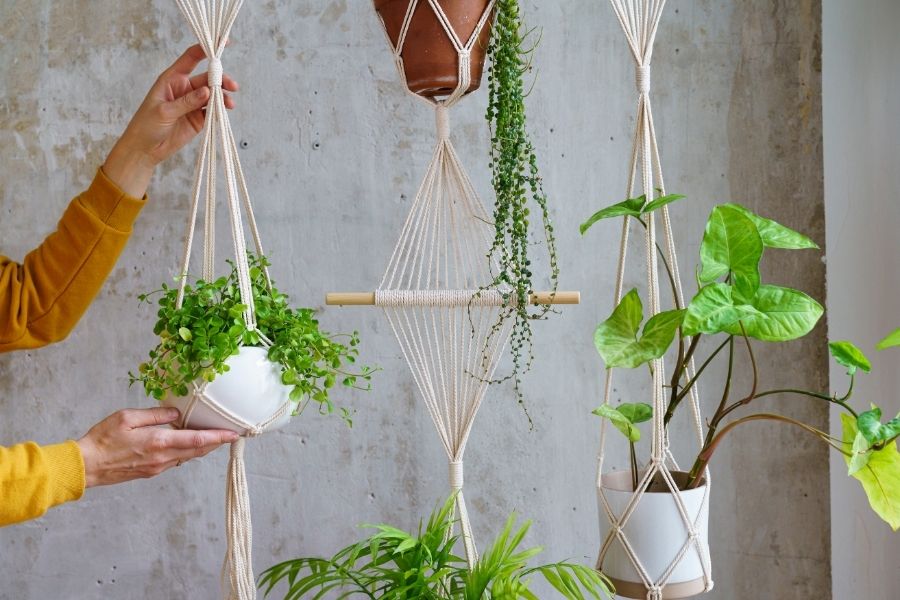Table of Contents
In the ever-evolving world of interior design, landscaping designers are increasingly turning to artificial plants and flowers to enhance their projects. Not only do artificial greenery solutions offer a low-maintenance alternative to live plants, but they also provide a versatile and long-lasting option for creating stunning interior spaces. In this article, we will explore the various ways landscaping designers can effectively incorporate artificial plants into their interior design projects, focusing on key areas within indoor spaces.

1. Reception Areas: Creating Lasting Impressions with Artificial Greenery
The reception area serves as the gateway to a space, and its design plays a pivotal role in shaping visitors’ initial perceptions. In the realm of interior design, landscaping professionals are increasingly turning to artificial plants and flowers as key elements to craft memorable and inviting reception spaces. This section delves deeper into the strategic placement of artificial greenery to enhance the welcoming ambiance of reception areas.
– Grand Entrances with Artificial Palms:
Make a bold statement by incorporating large artificial palms at the entrance of reception areas. These majestic additions instantly evoke a sense of sophistication and tropical charm. The lifelike quality of modern artificial palms ensures a visually striking entrance, setting the stage for a positive and memorable experience for guests.

– Cascading Greenery for Elegance:
To infuse a touch of nature without overwhelming the space, consider the use of cascading greenery. Artificial hanging plants or ivy strategically placed near reception desks or on feature walls add a sense of freshness and elegance. These elements not only soften the overall aesthetic but also create a harmonious balance within the reception area.
– Strategic Placement for Visual Impact:
The key to successfully integrating artificial plants into reception areas lies in strategic placement. Positioning larger artificial plants, such as potted trees or decorative shrubs, in corners or near seating arrangements can contribute to a well-rounded visual experience. This careful curation ensures that the artificial greenery complements the overall design without overpowering the space.
– Seasonal Variations with Artificial Flowers:
For a dynamic and ever-changing reception atmosphere, consider rotating artificial flowers to reflect different seasons or themes. Vibrant blooms in spring and summer can transition to warm hues in autumn, allowing for a versatile and adaptable design. This approach not only keeps the reception area visually engaging but also showcases the flexibility of artificial floral arrangements.

2. Conference Rooms: Fostering Productivity and Tranquility with Artificial Greenery
Conference rooms are spaces where creativity converges with professionalism, and the atmosphere within these walls can significantly impact the outcome of meetings and discussions. Landscaping designers can elevate the ambiance of conference rooms by strategically incorporating artificial plants, creating an environment that seamlessly blends the professional with the calming. This section explores how the introduction of artificial greenery can contribute to a more relaxed and productive atmosphere within conference spaces.
– Subtle Touches with Artificial Succulents:
For a refined and understated infusion of nature, consider adorning conference tables with artificial succulents. These low-maintenance, realistic replicas bring a touch of greenery without overwhelming the workspace. The subtle presence of succulents not only adds visual interest but also promotes a sense of calm conducive to focused discussions.
– Potted Plants for Visual Appeal:
Strategically placed potted plants on shelves or credenzas within conference rooms can be instrumental in creating a visually appealing and balanced atmosphere. Opt for artificial plants with varying heights and textures to add depth to the space. This thoughtful arrangement fosters a connection to nature without distracting from the professional setting.
– Table Centerpieces for Impact:
Transform conference tables into focal points by incorporating artificial plant centerpieces. Consider arrangements featuring a mix of greenery, flowers, and decorative elements. These centerpieces not only serve as conversation starters but also contribute to a cohesive and inviting atmosphere, making the conference room a space where ideas can flourish.
– Consistency in Design Elements:
Maintain consistency in the design language by selecting artificial plants that align with the overall theme of the conference room. This could include matching the color palette of the space or choosing plant varieties that complement existing decor. A cohesive design ensures that artificial greenery seamlessly integrates into the professional setting.
3. Vertical Gardens and Green Walls: Elevating Interior Spaces with Artificial Greenery
In the realm of interior design, the utilization of vertical spaces has become a transformative trend embraced by landscaping designers. Vertical gardens and green walls, adorned with realistic artificial plants, offer a unique and visually striking way to introduce nature into indoor environments. This innovative approach not only adds aesthetic appeal but also contributes to a sense of indoor tranquility. In this section, we will explore how landscaping designers can harness the potential of vertical gardens and green walls to create captivating and serene atmospheres, with a focus on their effectiveness in lobbies and common areas.

– Captivating Visual Interest:
Vertical gardens and green walls serve as captivating focal points within interior spaces. The three-dimensional aspect of these installations adds depth and texture, creating a visually dynamic environment. The use of realistic artificial plants ensures a lush and vibrant appearance year-round, maintaining the visual appeal without the need for constant maintenance.
– Creating Indoor Tranquility:
The incorporation of artificial greenery in vertical gardens contributes to a sense of indoor tranquility. The visual connection to nature has been proven to reduce stress and enhance overall well-being. In lobbies and common areas where people gather and transit, the presence of green walls creates a soothing backdrop, fostering a more relaxed and pleasant atmosphere.
– Space Optimization in Lobbies:
Lobbies often serve as the introduction to a building or space, making them ideal candidates for the incorporation of vertical gardens. Artificial green walls can be strategically placed to optimize space, providing a refreshing and aesthetically pleasing welcome to occupants and visitors. This innovative use of vertical space enhances the overall design and sets a positive tone for the entire interior.
– Common Areas: Fostering Community and Connection:
In common areas where people come together for various activities, the inclusion of green walls can foster a sense of community and connection. These installations create inviting spaces for relaxation and social interaction, encouraging occupants to pause and appreciate the natural beauty surrounding them. The choice of artificial plants ensures that the greenery remains vibrant, regardless of the level of foot traffic.
– Incorporating Lighting Effects:
Enhance the impact of vertical gardens by incorporating strategic lighting effects. LED lighting can be integrated to highlight specific areas, creating a dramatic and visually appealing display. This not only adds an element of sophistication but also ensures that the greenery remains a captivating feature, even in low-light conditions.
– Sustainable Design Practices:
For eco-conscious projects, artificial green walls present a sustainable design option. These installations require no water, pesticides, or fertilizers, making them environmentally friendly. This aligns with the growing emphasis on sustainable practices in modern interior design, allowing landscaping designers to contribute to greener and more sustainable spaces.
4. Workstations and Cubicles: Boosting Well-Being and Productivity with Artificial Greenery
In the bustling world of office spaces, individual workstations and cubicles often bear the brunt of a sterile and monotonous atmosphere. Recognizing the impact of a well-designed workspace on employee well-being and productivity, landscaping designers are increasingly turning to artificial plants as a simple yet effective solution. This section explores the myriad ways in which the introduction of artificial greenery can breathe life into individual workspaces, creating a refreshing contrast to the often mundane office environment.
– Contrast to Sterile Environments:
The typical office environment, with its neutral colors and standardized furniture, can sometimes feel clinical and uninspiring. Artificial plants offer a simple yet powerful solution to this challenge. By introducing small potted plants or desktop arrangements, landscaping designers can create a refreshing contrast, infusing individual workspaces with a touch of nature. This not only enhances the aesthetic appeal but also contributes to a more pleasant and inviting atmosphere.
– Small Potted Plants for Personalization:
Consider incorporating small potted plants on desks or shelves within workstations. These miniature green companions not only add a splash of color but also provide employees with a sense of ownership over their workspace. The act of caring for a small plant can instill a sense of responsibility and connection to nature, fostering a more positive and personalized work environment.

– Desktop Arrangements for Visual Interest:
Enhance the visual appeal of workstations by introducing desktop arrangements featuring artificial plants. These arrangements can include a combination of greenery, flowers, and decorative elements. The thoughtful placement of these arrangements not only adds visual interest but also creates a conducive environment for focus and concentration.
– Promoting Well-Being:
Numerous studies have highlighted the positive impact of plants on mental well-being. By strategically placing artificial plants within workstations, landscaping designers can contribute to a healthier and more balanced work environment. The presence of greenery has been associated with reduced stress levels and increased overall job satisfaction, ultimately fostering a workplace culture that prioritizes employee well-being.
– Low Maintenance Solutions:
One of the significant advantages of incorporating artificial plants in workstations is their low maintenance nature. Employees can enjoy the benefits of a green workspace without the need for watering, pruning, or concerns about adequate sunlight. This practical aspect ensures that the positive impact of greenery is sustained over time, requiring minimal effort on the part of employees.
– Flexible Design Options:
Artificial plants offer a myriad of design options, allowing landscaping designers to tailor their choices to the specific needs and aesthetics of individual workspaces. Whether opting for sleek and modern arrangements or more traditional and ornate designs, the flexibility of artificial greenery ensures that it seamlessly integrates into diverse office settings.
– Biophilic Design Principles:
The incorporation of artificial plants aligns with the principles of biophilic design, which seeks to connect occupants with nature in the built environment. This approach recognizes the innate human need to be in proximity to natural elements and acknowledges the positive impact on cognitive function and creativity.
5. Restrooms: Infusing Elegance and Freshness with Artificial Greenery
In the world of interior design, even the smallest spaces hold the potential for transformation. Restrooms, often overlooked in terms of decor, can benefit greatly from the strategic introduction of artificial plants. Landscaping designers recognize that these small yet essential spaces deserve attention, and by incorporating hanging artificial plants or small potted options, they can add a touch of elegance and freshness, contributing to an overall positive experience for restroom occupants.
– Elevating Aesthetics with Hanging Plants:
Restrooms, despite their utilitarian nature, can become havens of elegance with the addition of hanging artificial plants. Suspended from the ceiling or strategically placed near mirrors, these green accents create a visual focal point, transforming an ordinary restroom into a space that exudes sophistication. The cascading greenery adds a dynamic element, making the restroom experience more pleasant and memorable.
– Small Potted Plants for Tranquil Vibes:
Introducing small potted artificial plants to restroom countertops or shelving units is a subtle yet effective way to infuse freshness into the space. These miniature green companions contribute to a tranquil atmosphere, offering occupants a brief respite from the hustle and bustle of daily activities. The choice of plant varieties can further enhance the ambiance, whether it’s a hint of vibrant flowers or calming green foliage.

– Overcoming Size Constraints Creatively:
Restrooms are often constrained by limited space, but this should not deter landscaping designers from introducing artificial greenery. Hanging planters maximize vertical space, while compact potted options can be strategically placed on windowsills or corners. Creativity in overcoming size constraints ensures that even the smallest restrooms can benefit from the positive impact of artificial plants.
– Contributing to Positive Occupant Experi ence:
The restroom experience is not solely about functionality; it encompasses the overall ambiance and impression left on occupants. Artificial plants play a crucial role in enhancing this experience by creating a visually pleasing and welcoming atmosphere. The presence of greenery contributes to a sense of cleanliness and care, leaving occupants with a positive and refreshed feeling.
– Maintenance-Free Elegance:
Incorporating artificial plants in restrooms offers a practical solution to the challenges of maintenance. Unlike live plants that may struggle in low-light conditions or require regular watering, artificial plants retain their elegance without any upkeep. This low-maintenance approach ensures that restroom aesthetics remain consistently pleasing without imposing additional responsibilities on facility management.
– Complementing Existing Design Elements:
The choice of artificial plants should harmonize with the existing design elements of the restroom. Whether the space boasts a contemporary, minimalist, or classic aesthetic, selecting artificial greenery that complements these themes enhances cohesiveness. The goal is to create a seamless integration that feels natural within the restroom environment.
– Hygienic and Allergen-Free Solutions:
Artificial plants offer a hygienic alternative to live counterparts in restroom settings. As allergen-free options, they contribute to a healthier indoor environment, particularly in spaces where cleanliness is paramount. This aspect is especially crucial in maintaining a restroom that feels both inviting and sanitary.
6. Retail Spaces: Captivating Shoppers with Strategic Use of Artificial Greenery
In the dynamic world of retail, the art of visual merchandising plays a crucial role in attracting and retaining customers. Landscaping designers are harnessing the power of artificial plants to create visually stunning displays that go beyond traditional aesthetics. In retail environments, the strategic use of lifelike artificial trees and floral arrangements has become a key element in drawing attention to key products or sections within the store, enhancing the overall shopping experience.
– Eye-Catching Displays with Large Artificial Trees:

Large artificial trees strategically placed within a retail space can instantly command attention. Whether positioned at the entrance to create a grand welcome or near specific product sections, these towering, lifelike structures serve as visual anchors. The scale and realism of large artificial trees not only add a touch of nature but also contribute to a sense of opulence, making them perfect for highlighting premium or seasonal products.
– Floral Arrangements as Focal Points:
Incorporating lifelike artificial floral arrangements serves as a versatile way to create focal points within a retail environment. These arrangements can be placed on display tables, at the center of clothing racks, or near the checkout area. The use of vibrant flowers adds a pop of color, directing the shopper’s gaze and creating a visually engaging experience. Retailers can also change floral arrangements to reflect seasonal themes or promotions.
– Sectional Highlighting for Product Emphasis:
Strategic placement of artificial greenery allows designers to guide shoppers through different sections of the store. By framing specific product displays with well-positioned artificial plants, designers can draw attention to new arrivals, special promotions, or featured items. This intentional approach to sectional highlighting encourages exploration and enhances the overall shopping journey.
– Creating Atmosphere with Greenery:
Artificial plants contribute to the creation of a unique atmosphere within retail spaces. Whether aiming for a tropical oasis, a minimalist boutique, or a cozy winter wonderland, the choice of artificial greenery sets the tone. Customizing the selection of plants and trees to match the brand’s identity enhances the overall ambiance, providing a memorable and immersive experience for shoppers.
– Year-Round Visual Appeal:
Unlike live plants that may require careful maintenance and can be affected by seasonal changes, artificial greenery maintains its visual appeal year-round. Retailers can create consistent and captivating displays regardless of the season, ensuring that the store remains inviting and on-trend at all times. This flexibility allows for continuous innovation in visual merchandising strategies.
7. Lounge Areas: Crafting Comfort and Ambiance with Artificial Greenery
Lounge areas serve as havens for relaxation, socialization, and unwinding. Landscaping designers, recognizing the importance of ambiance in these spaces, are turning to artificial plants to infuse warmth and style. In various forms such as hanging planters, floor-standing arrangements, and artificial flower bouquets, artificial greenery becomes a key element in creating a cozy and inviting atmosphere within lounge areas.
– Suspended Serenity with Hanging Planters:
Introducing artificial plants through hanging planters transforms lounge areas into serene retreats. Suspended from ceilings or architectural features, these planters add a touch of nature from above, creating a dynamic visual element. The gentle sway of the hanging greenery contributes to a calming atmosphere, making lounge areas more inviting for occupants seeking solace or conversation.

– Floor-Standing Elegance:
Landscape designers can employ floor-standing arrangements to anchor lounge spaces with elegance. Large artificial plants in decorative containers become focal points, defining seating areas and adding a sense of grandeur. The versatility of floor-standing arrangements allows for creative placement, contributing to the overall layout and flow of the lounge while maintaining a relaxed and welcoming aesthetic.
– Tabletop Tranquility with Artificial Flower Bouquets:
Artificial flower bouquets arranged on tabletops or as centerpieces offer a delicate touch of nature. These vibrant and realistic arrangements bring a burst of color to lounge areas, creating a visually appealing focal point. The choice of flowers can be tailored to match the season or complement the lounge’s overall design, contributing to the ever-changing yet timeless charm of the space.
– Biophilic Elements for Well-Being:
The incorporation of artificial greenery aligns with the principles of biophilic design, recognizing the human need for connection with nature. In lounge areas, where occupants seek respite from the demands of daily life, the introduction of biophilic elements, such as artificial plants, contributes to a sense of well-being. This connection to nature fosters relaxation and rejuvenation within the lounge environment.
– Creating Zones with Green Partitions:
Landscaping designers can use artificial green partitions to create distinct zones within larger lounge areas. These partitions, featuring a mix of artificial plants and foliage, define intimate seating areas or provide a sense of privacy without compromising the open and airy feel of the space. The result is a lounge that caters to various preferences, from social interactions to moments of quiet contemplation.
– Seasonal Transformations:

To keep lounge areas dynamic and engaging throughout the year, designers can swap out artificial flowers or plants to reflect changing seasons. This seasonal transformation not only adds variety to the lounge’s aesthetic but also ensures that occupants experience a fresh and invigorating atmosphere with each visit.
Artificial plants and flowers offer landscaping designers a plethora of opportunities to enhance interior spaces without the challenges associated with live plants. By strategically incorporating these elements into key areas such as reception spaces, conference rooms, vertical gardens, workstations, restrooms, retail spaces, and lounge areas, designers can create visually stunning and low-maintenance environments that cater to the needs of both clients and occupants. With the advancement of technology, realistic artificial plants have become virtually indistinguishable from their live counterparts, allowing for endless possibilities in interior design projects.


